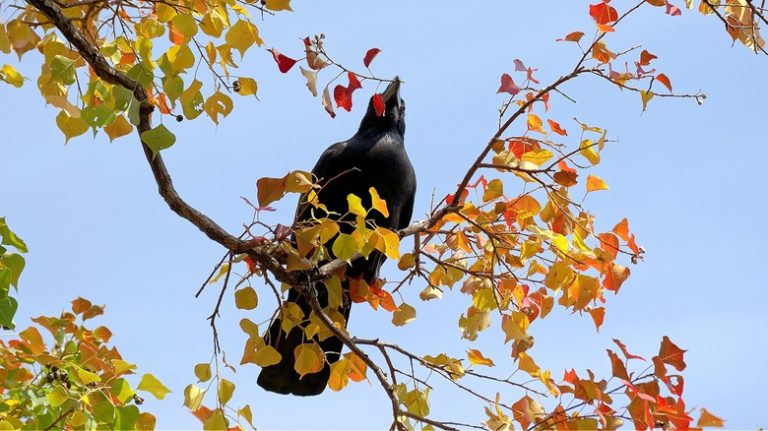The Burning Bush, scientifically known as Euonymus alatus, is a common shrub species native to Japan. It is also commonly called the Winged Euonymus due to the corky wings that grow along the stems. The shrub is known for its stunning fall colors, with bright red leaves that cover it in early winter. This characteristic has made it a popular choice for landscaping purposes in many parts of the world. However, its invasive nature and negative impacts on the environment have led to concerns about its control and alternatives.
The Burning Bush can grow to a height of several feet, with branches that spread out and create a dense cover. Its branches are covered in corky wings, giving it a unique appearance that makes it easy to identify. The leaves of the shrub are simple and alternate, while the fruits are small, red capsules that open up to reveal bright orange seeds. These seeds can be easily spread by birds or other animals, contributing to the shrub’s invasiveness.
The history of the Burning Bush is well-documented, with references to its origin in Japan and its introduction to other parts of the world as an ornamental plant. It was initially planted for its attractive flowers and fruits, but its ability to spread rapidly and outcompete native species soon became apparent. In fact, the Burning Bush is now considered an invasive species in many regions and is subject to control measures by extension services and environmental agencies.
Due to its ecological impacts and ability to disrupt natural ecosystems, controlling the spread of the Burning Bush is crucial. Various methods have been developed to deal with this invasive shrub, including manual removal, cutting and burning, and herbicide application. However, it is important to carefully consider the impacts of these control methods on other plants and wildlife in the area.
In conclusion, the Burning Bush is a common shrub species with striking characteristics and a long history of use in landscaping. However, its invasive nature and negative impacts on the environment have raised concerns about its control and the search for alternatives. Understanding its identification, characteristics, and control methods is essential for effective management and the preservation of native ecosystems.
Burning bush or Winged Euonymus
The Burning bush, also known as the Winged Euonymus, is a shrub species that is native to Japan. It is a popular choice for landscaping due to its attractive foliage and vibrant red fall color. However, the burning bush is also classified as an invasive species in many areas, including North America, due to its ability to outcompete native plants and disrupt natural ecosystems.
The burning bush gets its name from the bright red color of its fall foliage, which looks like it is on fire. It is a deciduous shrub that can grow up to 15 feet in height. The stems of the burning bush have distinctive wing-like corky coverings, which give it its other common name, the Winged Euonymus.
In fact, the burning bush is often mistaken for another Euonymus species called the Winged Euonymus. The winged Euonymus is similar in appearance but has alternate leaves instead of opposite leaves like the burning bush. The two species can be easily differentiated by the presence or absence of the characteristic wing-like structures on the stems.
The burning bush produces small greenish flowers in early spring, which give way to pinkish-red fruit capsules. These capsules contain several seeds, which are spread by birds and other animals. The seeds can also germinate and produce new seedlings, further contributing to the spread of the plant.
If you are unsure about the identification of a shrub that resembles the burning bush, several online resources provide detailed descriptions and photos to help you differentiate between the two species. The University of Illinois Extension website, for example, has a comprehensive guide on how to identify and control the burning bush.
In terms of ecological impacts, the burning bush can form dense thickets that crowd out native plants, reducing biodiversity and altering habitat availability. It can also negatively affect the natural regeneration of forests by creating shade and competing for resources.
There are several methods for controlling the spread of the burning bush, including manual removal, herbicide application, and prescribed burning. However, it is important to note that the burning bush is still widely used in landscaping due to its aesthetic appeal. If you choose to plant the burning bush in your garden, it is recommended to prevent the spread of its seeds by removing the fruit capsules before they ripen.
In conclusion, the burning bush, or Winged Euonymus, is a popular shrub species known for its vibrant fall color. However, it is also considered invasive in many areas, posing a threat to native plants and ecosystems. It is important to be able to identify the burning bush and to take appropriate measures to control its spread.
How to identify burning bush
The burning bush, also known as euonymus alatus or winged euonymus, is a popular landscaping plant in many parts of the world. It is native to East Asia, particularly Japan, but has been planted in other regions for its attractive appearance and ease of cultivation.
The burning bush is a woody shrub that can reach heights of around 15 feet. It has simple, alternate leaves that are oval-shaped and light green in color. In the early fall, the leaves turn a bright red, creating a striking contrast with the surrounding landscape. The stems of the burning bush are distinctive, with light brown bark and prominent “wings” that give them a unique appearance.
To identify a burning bush, look for the following characteristics:
| Leaves | Simple, alternate, oval-shaped, light green in color, turn bright red in the fall |
| Stems | Woody, light brown bark, “winged” appearance |
| Fruit | Small, red capsules with orange seeds, clustered along the stems |
The burning bush is often confused with other plants, including the native American strawberry bush (Euonymus americanus) and the invasive Chinese and Japanese euonymus species. However, the burning bush can be distinguished by its unique winged stems and red fall foliage.
In terms of identification, there are several methods to determine if a plant is a burning bush. One method is to examine the leaves and stem of the plant. Another method is to look at the fruit; the burning bush produces small red capsules with orange seeds. Finally, the unique “winged” appearance of the stems is a clear indicator of a burning bush.
It’s important to note that while the burning bush is popular for its aesthetic appeal, it is considered invasive in many areas. Its spread has negative impacts on native plant species and can disrupt local ecosystems. As a result, it is recommended to avoid planting burning bush and instead consider native alternatives. If you already have burning bush growing on your property, it’s best to control its growth and prevent it from spreading further.
In conclusion, identifying a burning bush involves looking at its distinctive characteristics such as its red fall foliage, winged stems, and fruit. By understanding these features and practicing responsible planting and maintenance, you can prevent the negative ecological impacts of this invasive species.
Stem
The stem of the Burning Bush is a woody extension of the plant that grows above the ground. It is one of the main characteristics used to identify the bush, and it plays a crucial role in the overall growth and health of the plant.
The stem of the Burning Bush has several important features. It is covered in thin, corky bark that helps protect the inner tissues from external damage. The stem is also winged, with prominent ridges or wings that run vertically along its length. This gives the stem a unique appearance, which can be used to differentiate it from other bushes or plants.
The stem of the Burning Bush typically grows to a height of around 10 to 15 feet. It is alternate branching, meaning that the branches emerge from different points along the stem, rather than directly opposite each other. The stem also produces small clusters of flowers and fruits, which are commonly observed in the fall season.
In terms of ecological impact, the stem of the Burning Bush is not considered invasive in its native range, which includes Japan. However, it has been documented to have invasive tendencies in certain regions where it has been introduced as a landscaping plant. In these areas, the plant can spread rapidly and outcompete native species, leading to negative effects on the local ecosystem.
In terms of use and origin, the stem of the Burning Bush has been utilized for various purposes. Its light and corky stem can be used to make natural materials such as paper or coverings for walls and roofs. In addition, the stem has been used in traditional medicine for its potential health benefits. However, it should be noted that some parts of the plant, including the stem, leaves, and fruit, contain toxic compounds and caution should be exercised when handling or consuming them.
In conclusion, the stem of the Burning Bush is a noteworthy feature of this popular plant. Its unique characteristics and ecological impact make it an interesting subject of study. Whether used for landscaping purposes or for its medicinal properties, the stem of the Burning Bush has numerous uses and merits further exploration.
Branches
The branches of the Burning Bush, or Winged Euonymus, are an important characteristic of this species. The branches are woody and have distinctive wings that give them a unique appearance. These wings are extensions of the stem and can be seen along the length of the branches.
The branches of the Burning Bush can grow to a height of around 20 feet, making them a popular choice as a small tree or large shrub. They have a similar look to other shrubs in the genus Euonymus, such as the Strawberry Bush, which is native to Japan. However, the unique winged branches of the Burning Bush make it easy to identify.
The stems of the Burning Bush are also noteworthy. They have a corky texture and are light brown to gray in color. The leaves of the plant are arranged in opposite pairs along the branches. In the fall, the leaves turn a vibrant red, giving the plant its common name.
In addition to its unique characteristics, the branches of the Burning Bush have ecological impacts. The plant is invasive in many areas and can outcompete native species. It has been documented to form dense thickets that displace native vegetation and alter the natural habitat. As a result, controlling its spread and identifying alternatives are important steps in managing this species.
The fruits of the Burning Bush, while small and inconspicuous, are also noteworthy. They are small, round capsules that burst open in the early fall to reveal bright orange-red seeds. The seeds are encased in a fleshy covering and are spread by birds and other animals.
In conclusion, the branches of the Burning Bush have distinct characteristics that make them easy to identify. However, the plant’s invasive nature and ecological impacts call for a solution to control its spread and promote the use of native alternatives.




